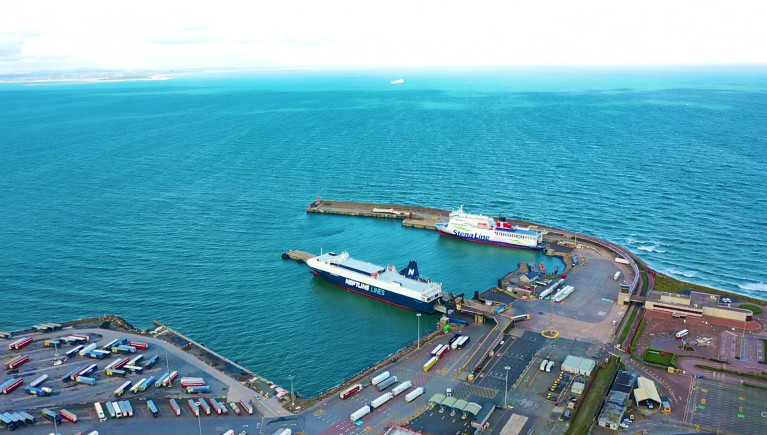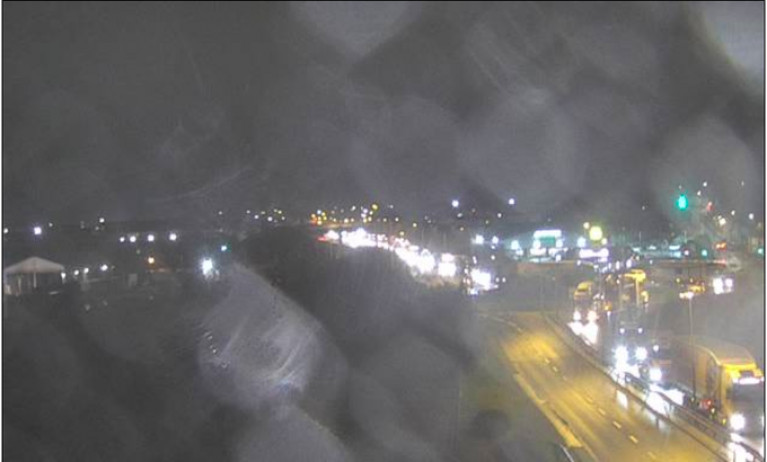Displaying items by tag: Post Brexit
Twenty-Fold Rise in Health Checks on Imports from Britain - Post Brexit
New data shows that there has been a 20-fold increase in the number of consignments of food and plant products and live animals being processed by health inspectors at Irish ports since Brexit.
Department of Agriculture inspectors and health officials are processing about 1,700 consignments a week compared with less than 100 a week last year under new border controls covering sanitary and phytosanitary (SPS) checks on goods being imported from Britain.
New figures from the Department of Agriculture show that about one in every 200 of these consignments have been rejected. In more than half of these cases it is because there is inadequate, incorrect or missing paperwork.
The department said that out of 53,148 consignments processed since the start of the year, less than 1 per cent, or 262 have been rejected.
The bulk of the consignments requiring processing by the inspectors – more than 47,000 – are coming through Dublin Port, with a further 2,300 coming through Rosslare Europort.
Further reading from The Irish Times.
On a major road leading to Holyhead Port, (ferry) traffic measures have been introduced as the UK prepares to enter its new trading relationship with the EU.
As BBC News writes, the Welsh Government has said the plans are aimed at "minimising any possible disruption to the port, town and wider community".
Freight turned away from the port due to incorrect documentation will be sent on to the westbound A55 (see photo above).
The UK Government has predicted this could be 40-70% of freight.
Holyhead is the second busiest roll-on/roll-off port in the UK, behind only Dover.
Around 600 lorries and trailers leave the Welsh port on ferries bound for Dublin Port every day.
A trade deal between the EU and UK has now been agreed and will take effect from 1 January, but the changes in the trading relationship between the two parties mean there could be some disruption.
The Welsh Government added it expected the peak of traffic issues to be in mid-January.
For further details of traffic stacking management of HGV's click here and much more.
Post-Brexit: Naval Service to Acquire New Ships for Fishery Patrols
Plans are in place for the Naval Service to acquire two new ships for post-Brexit fishery protection patrols in the Irish Sea next year.
They will be smaller than the 90m-long fishery offshore patrol vessels (OPV) vessels currently being used as larger ships are needed to patrol the Atlantic during bad weather, whereas the weather in the Irish Sea isn't as inclement.
The Irish Examiner understands that Defence Minister Simon Coveney has held discussions on the matter with senior Naval Service officers and officials from the Department of Defence.
It's understood that two ships not being used by a foreign navy are currently being examined and a formal approach to purchase them could be made soon. An option to have them purpose-built is also being considered, with sources saying they could be built by a European shipyard within six months.
Also anticipated is that the new additions will be based on the east coast, most likely in the Dún Laoghaire (Harbour) area. The type of ship likely to be used would be between 40-50m long and can be crewed by just 20 personnel. The larger ships require a crew of about 45.
More from the newspaper here which cites the new pair are likely to replace ageing tonnage notably Afloat adds the flagship LÉ Eithne which has an adopted port of Dun Laoghaire on Dublin Bay.
As Afloat reported last month the Department of Defence confirmed an intention to purchase a new Multi Role Vessel (MRV) for the Naval Service to enable the newbuild to be used as a hospital ship in addition capable of carrying troops and helicopters.
‘Unique’ Cross-Border Position Foyle Port Will Leverage after Brexit
#Ports&Shipping - The Irish Times writes that Foyle Port, which has operations on both sides of the Border, plans to use its “unique” position to its advantage after Brexit, its chief executive said on Thursday.
Brian McGrath said the port, which has reported a record turnover of £9.1 million (€10.2 million), is the “key marine gateway for the North West of Ireland” and is already a very “good case study” in how to operate across different jurisdictions.
Mr McGrath said the port’s daily business straddles the Border from its headquarters at Lisahally on the outskirts of Derry to Greencastle in County Donegal where its pilots are based.
Foyle Port is managed by the Londonderry Port and Harbour Commissioners and their jurisdiction runs from Craigavon Bridge in Derry to a line drawn from the Tower on Magilligan Point to Greencastle Fort. The annual value of trade passing through the port is estimated to be in the region of £1 billion.
The newspaper has more on the story here.
What Could Leaving EU Mean for Port of Fishguard? - Post Brexit
#FerryNews - Of all the stories that have come out of Brexit and Wales, the impact or otherwise on the country's port links with Ireland has been one of the biggest.
Wales so writes BBC News, has three ports that link Great Britain to Ireland, with warnings of long queues if, as a result of whatever Brexit negotiations produce, customs and border checks are needed.
One port, Holyhead, has had much written about it - with concerns new checks could result in delays and disrupt its business model.
But the smaller Port of Fishguard in Pembrokeshire, with its own roll-on, roll-off service, has also been a focus of some concerns.
- 'Free ports' urged to boost business
- Holyhead 'extra-complexity' post-Brexit
- Concern about Holyhead port
- 'Danger' to Welsh ferry ports
An assembly committee report last year found 100,000 lorries were carried to Ireland via ports in Pembrokeshire in 2015 - a third of those through Fishguard.
The UK government said it did not want a so-called "hard border" with Ireland and it is unclear what, if any, impact the final Brexit settlement would have on Wales' ports.
Jeremy Martineau, secretary of the Fishguard and Goodwick Chamber of Trade, said the organisation, which has 140 members, does not have a view on Brexit.
But asked what he thought personally about the impact of leaving the EU on the town, the Remain voter said: "It depends on what happens with the Ireland/Northern Ireland border."
He feared border checks would deter commercial traffic from using the link - something he said was more significant than passenger traffic - and was concerned about direct routes from Ireland to the continent being developed.
For further reading on the story click here.
Could Brexit Bring ‘Port’ Business to Donegal?
#BrexitDonegal - The possibility of utilising harbours in Greencastle or even Buncrana, reports Donegal Now for commercial shipping could yet emerge as one of the unexpected positive consequences of Brexit.
If, as seems increasingly likely, a "hard border" is established, this could mean the reintroduction of customs posts and the imposition of duties on goods passing between Northern Ireland and the Republic.
However, Brexit could open the door for new shipping traffic into Donegal.
The possibility of general cargo using a port like Greencastle was raised this week by Seamus Bovaird of the Greencastle Harbour Users Group.
He floated the possibility that coal and animal feedstuffs could come by ship directly to Donegal.
To read more on this story, click here.

































































